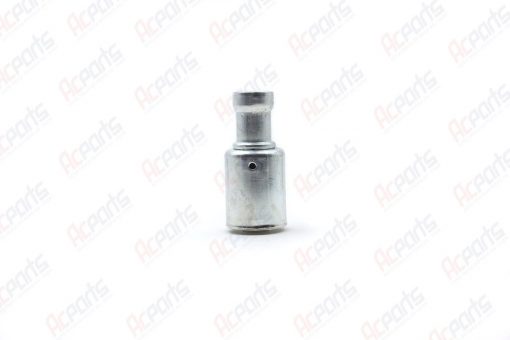Thinking even harder?Wait... thinking even harder... you really need this... back to your drawings...
Sorry... but not really
While I trust your advice to be very good, and I should most definitely follow it, Ford decided not to use any filter on the 87 Ranger or the 92 Thunderbird. It's not even available as an option for those years. I may regret not running one, but I'm trying to keep this as low cost as possible since it's all experimental and might fail spectacularly.
I won't know how much oil to run, how much refrigerant to run, etc.. Since my aftermarket condenser is smaller than both the Thunderbird and the Ranger. The compressor will certainly be larger than necessary (Ranger is an FS6 model, while Thunderbird is the FS10 I'm using), being that it's from the Thunderbird system that has a much larger condenser than the Ranger, and I'm using a Ranger evaporator which is a good bit larger than the Thunderbird unit.
Condenser = smaller than either factory unit
Evaporator = factory Ranger evap is larger than the Thunderbird evap
Compressor = larger than the factory Ranger unit
Custom hoses = will be shorter than either model's factory hoses.
That's some screwed up math to try to figure out, but overall, I'll have a factory Ranger evap, a smaller condenser but a larger compressor, so the amount of oil may increase due to compressor size but the amount of refrigerant should stay "close" to the same, though it will have to be reduced some because of using a little more oil.. Going with the factory Ranger capacities might be a good idea in my opinion. I think it was one ounce less of oil than the Thunderbird.
Last edited:








.jpg)

















